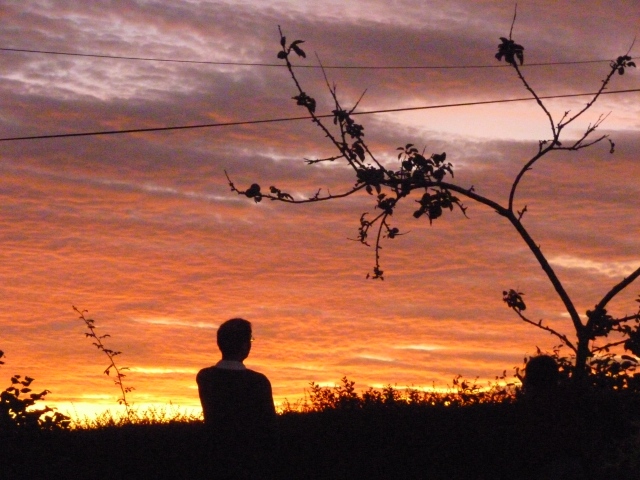Simon Coleman

“Swallows building under the eaves—swallows building in the chimneys; thrushes in the hawthorn- bushes; great missel-thrushes in the apple-trees of the orchard; the blue sparrow’s egg in the hedge; the chaffinch’s moss and lichen nest against the elm; the dove’s nest up in the copse, fearlessly building because no rude hand disturbed them; the pheasant’s eggs carelessly left on the ground by the bramble- bush, the corncrake’s found by the mower; the moorhen’s nest by the trout-pool. She knew and loved them all—the colour and sound and light, the changing days, the creatures of the wood and of the field. With these she lived, and they became familiar to her, as the threads of the pattern are known to those who sit the livelong day embroidering—the woven embroidery of the earth; so beautiful, because without design.”
This passage comes from Richard Jefferies’ pastoral novel, ‘The Dewy Morn’ (1884). The book has a fairly straightforward romantic plot but is notable for its outstandingly vivid nature descriptions. The sense of immersion in the infinite life and beauty of nature, which powered his autobiography, ‘The Story of My Heart’, returns in ‘The Dewy Morn’ in the central character, Felise. She is a young woman who loves and affirms life without the usual complexities and cares of human existence. As she walks among nature, Felise seems to become almost a human embodiment of the forms, colours and songs of the fields and lanes. The metaphor of nature as a woven pattern appears elsewhere in his writing. In the essay, ‘The Pageant of Summer’,
“Earth holds secrets enough to give them the life of the fabled Immortals. My heart is fixed firm and stable in the belief that ultimately the sunshine and the summer, the flowers and the azure sky, shall become, as it were, interwoven into man’s existence.”
Nature is full of mesmerizing patterns which confound our everyday thinking minds, but the heart – the real mind – knows them and can work with them. Discovering these currents of ‘true thought’ (as Jefferies described it) is becoming increasingly difficult in a society which seems to view everything through a linear time framework. The language of linear time is predominant in the media, in politics and academia. With rapid communications technology has come a fragmentation of even this ordinary time sequence, as a persistent hail of emails, texts and messages inhibits the continuity of attention that the human imagination needs. And our evolutionary biologists, who dominate thinking on the human relationship with Nature, frame all their elaborate theories within a linear time context. Nature as spontaneously creative, in an eternal dance of life, willing news forms, sounds and movement into existence – that’s not a vision they want to consider, let alone embrace.
Being receptive to Nature’s designless patterns and cycles requires a belief in the heart, but not the usual idea of heart as a chamber of emotion that has to be controlled by the mind. Eastern thought understood the primacy of the heart and places what we call the mind (usually equated with the brain) within the heart. The heart is what really thinks, and it knows much. In his late essay, ‘Nature in the Louvre’, Jefferies, after gazing long at a beautiful classical statue, wrote:
“Old days which I had spent wandering among deep meadows and by green woods came back to me. In such days the fancy had often occurred to me that, besides the loveliness of leaves and flowers, there must be some secret influence drawing me on as a hand might beckon. The light and colour suspended in the summer atmosphere, as colour is in stained but translucent glass, were to me always on the point of becoming tangible in some beautiful form. The hovering lines and shape never became sufficiently defined for me to know what form it could be, yet the colours and the light meant something which I was not able to fix. I was now sitting in a gallery of stone, with cold marbles, cold floors, cold light from the windows. Without there were only houses, the city of Paris—a city above all other cities farthest from woods and meads. Here, nevertheless, there came back to me this old thought born in the midst of flowers and wind-rustled leaves, and I saw that with it the statue before me was in concord. The living original of this work was the human impersonation of the secret influence which had beckoned me on in the forest and by running streams. She expressed in loveliness of form the colour and light of sunny days…”
Perception of a beautiful, natural, almost tangible idea is woven into all of Jefferies’ more spiritually-themed writing. A spirituality of the heart can never perceive human life as being outside Nature, though Jefferies often stresses the need for human self-reliance. The heart is awakened and led by beauty. It forever affirms life, creativity and hope, and makes time for itself.
